Edit My ResumeIn my experience, almost every prospective client begins our conversation by saying: Please help me edit my resume. It only goes to say that almost everyone knows that a well-written and nicely presented resume can do wonders for your job search. So, before you send yours out, follow this checklist to ensure you are sending out a better quality representation of yourself. And if you're interested in hiring a resume writer to have your current resume "re-written", you an always start here. CapitalizationUse a manual such as The Gregg Reference Manual if you do not know the capitalization rules. Grammar, Spelling, PunctuationUse the grammar and spell check function, then print it out and read the document word for word. Spell checker doesn’t know that you meant "manager" when you actually typed "manger." Check for proper use of commas and semi-colons. Again, if you are unsure, refer to the Gregg Reference Manual. Run-on SentencesCheck to make sure you do not have run-ons that are hard to read. ConsistencyYou must be consistent with your number usage (dates, money, numbers), plurals, and abbreviations. For example, don’t list one date as 8/2020 and then list another date as 3/15/2019. Also, be aware of listing software consistently (abbreviation use). MS Word and Microsoft Outlook are both correct, but not consistent. Education SectionWhen you have a degree, list only the year that you obtained your degree. When you list your dates, (i.e.: 9/2012 to 6/2015) many resume-scanning systems will not recognize that you obtained a degree, only that you attended college for a period of time Ampersands, Pronouns, NumbersAmpersands (&) - Ampersnds (&) DO NOT belong on a resume. There are a few exceptions. One exception is a well-known company name (AT&T). Another exception is well-known industry terms (P&L). Pronouns - Pronouns are not allowed on a resume. As a rule 101 in resume-writing, the use of any pronouns on a conservative resume is not allowed (i.e.: Me, I, mine, my, you, your, yours, us, our, ours, them, their, theirs, he, him, his, she, her, hers.) For example, it is not advised to write sentences such as: “Helped clients with their projects” or “Supported the client to meet his objectives” or “Our aim was to support our clients’ vision”. Numbers - Spelling one-digit numbers vs two-digit numbers (or more) - Another rule in resume writing is to spell out one-digit numbers, but we type them as numbers when there are two digits or more. About the AuthorMandy Fard is a Certified Professional Resume Writer (CPRW, CMRW) and Recruiter with decades of experience in assisting job seekers, working directly with employers in multiple industries, and writing proven-effective resumes. Headline for LinkedIn ProfileWhen someone views your LinkedIn profile, they will see your name, what connection level you are with that person (1st, 2nd, 3rd, etc.), and your LinkedIn Headline. In many cases, hiring managers and recruiters will make the decision to read your full LinkedIn profile based on just these three things. Consequently, a good LinkedIn Headline acts like a newspaper or magazine title. It gives the reader an idea of what your profile will include (just like a newspaper headline previews a story). Your LinkedIn profile is a marketing piece — not a biography or a résumé. It’s not designed to outline your entire professional history. Instead, it provides enough information to get people to connect with you — and/or make a contact with you. Because it’s a marketing piece, you need to come up with a Headline that will instantly attract the attention of your reader. You have approximately 20 seconds to catch the attention of a visitor to your profile. Consequently, you must find a way to stand out in a crowd. If your profile is like every other profile on LinkedIn, you won’t stand out and you won’t be found as easily. Standing out with your LinkedIn profile can mean highlighting the strongest qualifications you have for an employer in your LinkedIn Headline, backing up those qualifications with accomplishments throughout your profile and using strategies that will help you become found by the people who most need someone like you. Being specific leads to a much better LinkedIn Headline. Great LinkedIn Headlines attract attention and the more people who view your LinkedIn profile, the better your chances of connecting with the right person who can lead you to your dream job. Your LinkedIn Headline needs to quickly identify you as a certain type of person — i.e., manager or executive, or someone who specializes in a certain field or industry. It can focus on the results you deliver or what you can do for a prospective employer. A well-written LinkedIn Headline will also help you to structure the rest of the information you include in your LinkedIn profile. If the information doesn’t support the Headline, consider whether it should be included at all. Remember, focus is important. Note: LinkedIn’s default for your Headline is your job title and company. If you don’t change it, this is what LinkedIn will show on your profile. The Role of Keywords In Your LinkedIn ProfileKeywords also play an important part in being found by people who don’t know you on LinkedIn — this is particularly true for jobseekers who are hoping for contacts from prospective employers and recruiters. Keywords are a list of words and phrases that are related to your work — they are the words that a prospective employer would search for when trying to find someone like you. LinkedIn Headlines are searchable fields using the “People Search” function when someone is looking for particular skills, interests, qualifications, or credentials. You can also incorporate keywords throughout your LinkedIn profile, including: — Your LinkedIn Headline — Your current and former Work Experience — Your About section on LinkedIn (formerly called LinkedIn Summary) — The Skills section and other sections in your profile Where can you find keywords? Brainstorm them. Write down a list of words that relates to you, your work, your industry, and your accomplishments. Try to come up with as big of a list as you can; you will narrow it down later. You can also find keywords in job postings or job descriptions. Check out online job boards for positions (don’t worry about where the job is located, just find positions that are similar to the one you’re seeking and write down the keywords). You can also find broad job descriptions — with plenty of keywords — in the U.S. Department of Labor’s free Occupational Outlook Handbook (http://www.bls.gov/ooh/). Another great research tool is Google’s free AdWords Keyword Planner, which can be found at: https://ads.google.com/home/tools/keyword-planner/. You can use keywords you identified through your earlier research and it will suggest related keywords (it will also tell you the popularity of the keywords you enter as they relate to current Google search results). Also look at LinkedIn profiles of others in your industry — especially people who do what you do. However, note that you are looking for inspiration — not to copy their Headline exactly. Now it’s time to narrow down your keywords and pick the “Top 10” that you will use in your LinkedIn Headline and profile. The keywords that you select for your profile must fit two criteria:
Focusing on these areas enables you to get the most out of your online efforts while differentiating you from other job candidates with the same job title. You need to express clearly: “I am this.” Someone who is reading your LinkedIn profile should be able to recognize you in it. If what you wrote could apply to anyone with your job description, revise what you’ve written. How to Write an Attention-Getting LinkedIn HeadlineThe LinkedIn Headline and the first 2-3 sentences of your About Section on LinkedIn are critical to making connections and securing opportunities from recruiters and hiring managers. You can learn a lot about developing your profile from online dating sites — because the concept is the same. You have to get someone’s attention. Your profile may be the first impression that hiring managers have of you — so make it count! You’re trying to get them to take a first step and reach out to connect with you. Focus on what you have to offer a prospective employer; don’t focus on you. The information you provide should be 80 percent about what you have done for your current employer (accomplishments-oriented), and 20 percent about you and what you’re looking for. Unfortunately, most LinkedIn profiles (especially the About section!), are the reverse. Think of it this way: Prospective employers are tuned into a particular radio station — it’s called “WIIFM.” All employers are listening for is: “What’s In It For Me?” (WIIFM). Remember: Employers hire for their reasons, not yours. What proof do you have that you can offer the employer the results they are seeking? Quantify your accomplishments as much as possible in terms of numbers, percentages, and dollar amounts. Don’t copy someone else’s LinkedIn profile. Be original! Look at other profiles for ideas, but don’t copy someone else’s LinkedIn Headline or About section. Remember — your online presence must speak to your “onlyness.” Also, give your profile some personality! People who make a connection with you through your profile are more likely to contact you about a career opportunity. Formula for Writing an Effective LinkedIn HeadlineThere are generally two schools of thought when it comes to writing your LinkedIn Headline. The first is using a narrative or descriptive title; the second is simply using keywords separated by commas, bullets, the pipe symbol on your keyboard ( | ) or other keyboard characters (stars, arrows, checklists, etc.). LinkedIn’s current algorithm gives higher ranking to matching keywords, so strategy number two appeals more to computer searches, while strategy number one appeals to human readers. Eventually, all profiles found through computer searches will be reviewed by a human being, however, so it is important to balance readability with the inclusion of keywords. You are limited to just 120 characters in your LinkedIn Headline, so it’s also important to be succinct and direct. Things you can consider including in your LinkedIn Headline: — Job titles — Types of customers / projects you work with — Industry specialization — Brands you’ve worked for — Certifications or designations — Geographic territory specialization Note: Remember, if you don’t write your own Headline, LinkedIn will create one for you — with the most recent job title in your profile and a company or organization name. This is very similar to strategy number one, so this is the most common type of LinkedIn Headline you will see on the site. But it’s not the most effective LinkedIn Headline. To improve readability, capitalize the first letter of each of the words in your LinkedIn Headline. Here are some strategies for writing your LinkedIn Headline, along with the advantages and disadvantages that go along with each tactic.
This strategy can also use the following formulas: — (Job Title) — (Job Title) at (Company Name) — (Job Title) for (Industry) at (Company Name) — (Job Title) Specializing in (Keywords) For example, here is an example of a LinkedIn Headline that incorporates a job title and keywords:
This strategy can also incorporate key projects and/or the names of key clients or important employers, especially if any of those have high “name recognition” value. You may also wish to include a specific industry or geographic area to your job function-focused Headline. Here is an example that uses job function and targets the kinds of clients this consultant serves:
This can be expressed in several different ways: -- (Job Title) That Gets (Results) -- (Adjective) (Job Title) With a Track Record of Success in (Results) For example: Be specific! Adding numbers and other specific wording can make your LinkedIn Headline much more powerful. Here is the same strategy, but this one quantifies the scope and scale of the benefit to the employer: But try not to include the “Top 10 Overused Buzzwords in LinkedIn Profiles in the United States.” Here is the 2018 list: • Specialized • Experienced • Leadership • Skilled • Passionate • Expert • Motivated • Creative • Strategic • Successful — Source: LinkedIn Pulse, Blair Decembrele Heitmann, March 2018
This strategy also works if you can make a claim that is defensible (if the statement is “arguably true”). Put the claim in quotes so it appears as if it was published somewhere. If you are having trouble writing your LinkedIn Headline, write a very rough draft. It doesn’t matter if it’s not good, or if you have to leave some blanks. Having a framework will make it easier for you to complete later. Go ahead and finish writing the rest of your LinkedIn profile and then come back to it. Oftentimes, the Headline will become much clearer at that point. (Just remember to review your LinkedIn profile to make sure all the information you’ve included supports the focus of the content, as directed by the LinkedIn Headline and About section.) About the AuthorMandy Fard is a Certified Professional Resume Writer (CPRW, CMRW) and Recruiter with decades of experience in assisting job seekers, working directly with employers in multiple industries, and writing proven-effective resumes. Career Change QuizThis Career Change Quiz is designed to serve as a Career Change Self-Assessment. Rate each of these job or job or career change reasons (internal and external reasons) on a scale of 1 to 5. It starts with 1 being “does not apply to me or doesn’t affect me” to 5 being “affects me greatly.” As you rate your answer from 1 to 5 for each of the items below, write your answer for each item and then add up your score.
23-46 points: You’re starting to see reasons to make a change, but there’s no urgency. 47-69 points: Look for opportunities to make little adjustments and see if that helps. 70-92 points: You probably need a change. Start thinking about what you want to do. 93-115 points: This ship is going down! It’s time to take action. About the AuthorMandy Fard is a Certified Professional Resume Writer (CPRW, CMRW) and Recruiter with decades of experience in assisting job seekers, working directly with employers in multiple industries, and writing proven-effective resumes. Job Change OR Career Change?There’s a saying in the careers industry that you’ll know it’s time to make a job or career change when you start asking yourself if it’s time to make a change. While there is truth to that, there’s more to making your decision. Below are tips to help you identify some of the reasons why you may want to make a job change or career change and give you practical strategies to use as you make your decision. Reasons for a Job or Career ChangeThe first step is to assess the reason — or reasons — why you may desire a change. Change can be difficult — it usually is — so you want to make sure that the reason you are considering a switch isn’t something temporary that will fix itself, if given enough time. Some of the reasons why you may be considering a job change or career change are INTERNAL REASONS. These can include:
 EXTERNAL reasons for a job or career change EXTERNAL reasons for a job or career change EXTERNAL REASONS — that you have no control over — can also impact your decision to make a job change or career change. These can include:
Remember, you want to assess whether the INTERNAL and/or EXTERNAL reasons that are prompting you to consider the change are temporary (short-term) or something you would be permanently affected by. You should also assess the “temperature” of these reasons and how they affect you. Some of them may be more of a “minor inconvenience,” while others may feel “unbearable”. For example, while you may be working in a declining industry, as long as you have a job, you may not be interested in switching jobs or changing careers. But that’s almost like being a frog in a pot of water that is slowly heating up. The question isn’t “if” you will eventually be affected by changes in the industry, but “when.” If you take charge of managing your career, you will be in a better position to handle career change, not just react to it when your boss summons you into his office sometime down the road to let you know your services are no longer needed. Change Jobs Or Change Careers?Do you want to change the company you work for, or change your career path entirely? Take a look back at the assessment you just completed. Ask yourself if making a change to a new company would fix the issue or issues you identified. Or are they issues that are embedded within the industry itself, and would only be fixed if you changed industries entirely? Also, think about how you feel about the actual work you’re doing. Do you still have a passion for the type of work you’re doing, but maybe not in this particular work environment? If that’s the case, changing jobs could improve your situation. You might not need to change careers. Things to Consider Even if you’ve identified that there are internal or external reasons that you may want to consider making a change, ask yourself this: “Is there an opportunity to improve my current situation?” As previously mentioned, some of these things may be temporary and the issue may resolve itself. But the other piece of the puzzle is you. Is there some way that you could make a change that would improve the situation? For example, could you transfer to a similar position in a different part of the company? Could you talk to your supervisor and see if there are opportunities for additional responsibility or advancement that you may not be aware of? Could improving your skills (for example, pursuing additional education, training, or certifications) help you? If you feel your current situation can’t be improved, the next thing to do is develop a plan. Make sure you have a plan for what you want to do next before you decide to make a change. Think before you act — don’t be impulsive. Change can be difficult — the bigger the change, the more difficult it may be. Also, you want to make sure you’re running towards something you want to do, and not running away from something you don’t. Being impulsive may lead you to do something you may later regret — like one of those viral “I Quit” videos that are fun to watch, but may lead to long-term ramifications when prospective employers Google your name. Assess your marketability at another company or for another career path. What skills, education, and experience do you have to offer? Inventory your accomplishments. In the next section, where we address practical strategies, we’ll talk about the value of having your résumé professionally written so you can see how you stack up on paper for your desired next job or new career. Consider the timing of making a change, if you decide that’s what you want to do. For example, you may not want to leave your job in November if you’d earn an annual bonus if you stayed another month. The same is true for things like vested options in a stock plan or retirement account — make sure you manage the timing of your departure to maximize your benefits. Basically, don’t leave money on the table if you can help it. Along with considering the timing of your departure, do you need to do some things before you change jobs or careers? Perhaps you need to take some classes or earn a certification before you’ll be prepared to make a job or career change. Create a Personal/Professional Development Plan (PDP) for yourself, outlining the steps you need to take to bridge the gap between where you are now (skills, education, and experience) and what you need in your new job or career. Checking off as many of those items as you can will help make the transition smoother. Finally, it’s easier to find a job when you have a job, so don’t just quit your job. And don’t burn bridges at your former employer, if you can help it. Give ample notice, offer to train your replacement, prepare a checklist or cheat sheet for your replacement, etc. Practical Steps For Your Job or Career ChangeOnce you’ve decided that you do want to make a change — whether that’s a new company or a new career — here are some practical steps to take to make your transition move along smoothly. The first step is to get your financial house in order. You’ll be in better shape to make a change if you’re on sound financial footing. As you start this process, make sure a financial evaluation is part of your plan. Are there expenses that you can cut out — even temporarily — that will help you stockpile cash in the short term? Maybe you need money for additional training or certifications. Identify how you can save that money so that you have it ready when you need it. If your research shows that you may need to take a pay cut initially in order to make a job or career move, start cutting back now so that it’s not as big of a shock later. The next step is to decide on a target — what do you want to do? How will your next job — or career — be different from what you’re doing now? Take some time to identify what you want. Invest in career testing and/or meet with a therapist or career coach who specializes in helping with job change/career change. (This will also help you identify whether you may be suffering from anxiety or depression, which can affect your work, your decision-making ability, and your choices.) Next, research your new career. Talk to people who are actually doing the job you want to do — especially if you’re moving into a new career field. Research the qualifications for candidates who do what you want to do. Again, consider the idea of creating a Personal/Professional Development Plan (PDP) so you are prepared to make the transition. Once you decide you are going to make a change, start slowly compiling the information you need and slowly start disengaging yourself from your current job/current employer. You don’t want to take a full box of knick-knacks home at once, but you may start decluttering your files (both paper files and on your computer) and taking some personal items home so that you don’t have to pack them up all at once. Be careful when doing this, however, as it may tip off co-workers — or your boss — if too many personal items start disappearing. Take calls from recruiters — or reach out to connect to them. However, keep in mind this strategy will only work if you’re staying in the same industry. Recruiters specialize in placement, so they want to put “round pegs in round holes.” They won’t be interested in helping you make the change from being a computer software developer to a teacher. Finally, one of the best things you can do, once you have a job target in mind, is to engage a professional résumé writer to help you develop a résumé for your desired job. Especially if you are considering a career change, this can help you identify transferable skills that you have to offer and boost your confidence when you see the evidence of your qualifications on paper. Your résumé writer can also help guide you in collecting the information you need to develop your new career documents. Be prepared to invest in yourself and in the development of this document, because your résumé writer will have to spend a considerable amount of time to prepare a résumé that demonstrates how your skills, education, and experience are applicable to your new career path. But it can be a worthwhile investment as a tool as you make a change in your job or career. About the AuthorMandy Fard is a Certified Professional Resume Writer (CPRW, CMRW) and Recruiter with decades of experience in assisting job seekers, working directly with employers in multiple industries, and writing proven-effective resumes. Resume Update OR Resume Rewrite?When you already have a resume, at a certain point you’re faced with a dilemma: Should I update my existing resume, or is it time to completely reinvent it? This guide is designed to help you decide when it’s time to update — and when it’s time to rewrite it entirely. When you’ve got a great resume — especially one created by a professional resume writer — it can be difficult to decide to throw it out and start over again. But even the best formats can become outdated as technology changes. And what worked in one profession may not be appropriate in another. So, how do we know when is the right time for resume update or resume rewrite? When To Update and When To Rewrite Your ResumeHere are some questions to help you decide: How long ago was your resume created?
How long ago was your resume last updated?
Are you seeking a new role in the same profession, or are you changing professions?
Is there an “Objective” statement at the top of your resume?
Is your resume font Times New Roman – or does the resume have Comic Sans anywhere on it?
Are you using a functional resume format?
Has your existing resume gotten too long?
Does your resume have an “out-of-balance” or “outdated” appearance?
How often should you update your resume?Here are some guidelines:
When in doubt about anything related to your resume or job search, ask your professional resume writer! Career industry professionals stay up to date about trends in resumes and hiring technology and will be able to advise you about the best solution for your specific needs. About the AuthorMandy Fard is a Certified Professional Resume Writer (CPRW, CMRW) and Recruiter with decades of experience in assisting job seekers, working directly with employers in multiple industries, and writing proven-effective resumes. STAR METHOD INTERVIEW QUESTIONSThe STAR method interview questions have long been used by recruiters and employers alike. Learning the formula helps to articulate accomplishments in a resume or LinkedIn profile or answer the question "TELL ME ABOUT A TIME WHEN YOU…” in an interview. Below is an overview of the STAR formula, where and when to use the STAR formula, how to create your own STAR story, 18 examples to create STAR stories, and a fill-in-the-blanks exercise to capture the information in the STAR formula to create STAR stories. Articulating Your AccomplishmentsBeing able to articulate your accomplishments and your ability to handle challenges is important in your job search. Having a format to structure your responses makes it easier to create compelling career stories to:
What is the STAR Method Formula?There are four components to the STAR formula: (S) – Situation (T) – Task (A) – Action (R) – Result You can also add an optional section at the end of your STAR story: Reflection. What were the lessons learned from the situation? If the result was failure, you can talk about what you learned from the experience or changed as a result. Where To Use The STAR FormulaThe STAR formula helps you create STAR stories that can be used:
When To Use The STAR FormulaIn a job interview, use STAR stories when you’re asked questions such as:
Create Your Own STAR StoryThe STAR Method's formula has been implemented the questions listed below. Use them as an exercise to create your own STAR stories using the prompts (or come up with your own). Preparing specific examples ahead of time will help you be more confident in your responses. Write out the answers and practice them with a friend or family member or your career coach. Or record yourself (audio or video) and practice your STAR stories until they sound natural, not rehearsed. Here are 18 examples you can use to create your STAR stories (“DESCRIBE A TIME WHEN YOU…”):
Example for Using The STAR Formula To Create a STAR StorySTAR STORY: Collaborated With Others & Had a Conflict With an Employee SITUATION: In my role as manager at GATE Corporation, I added three new team members when we acquired LoneStar Productions. My team of five had all worked together for more than two years at this point, so integrating new staff was a big deal — both for me and the team. Unfortunately, the new employees were used to different processes and methods for project management, which led to problems on the first project we worked on after the acquisition. TASK: As the direct supervisor of the team, it was my job to make sure that the onboarding of the new team members went smoothly. Both my existing team members and my new team members recognized right away that there was a problem, and they looked to me for a solution. ACTION: The first thing I did was sit down with the new team members to get a better understanding of how they were used to tackling projects. I also shared with them the standard operating processes that our team used for project management. Next, I organized a team-building challenge that had nothing to do with the current project — a way for the whole team to get to know each other, without the pressure of the project that was hanging over our heads. RESULT: As a result of the team-building challenge, the employees got to know each other better. The specific team-building exercise focused on communication styles, which had been at the root of the project problems. As the team members interacted more, they were able to communicate more effectively to address some of the differences in project management processes. We ended up blending some of our existing methods with ideas from the new team members, which made the whole process more effective. Even though we had gotten off to a rough start, I ended up bringing the project in on time and on budget, and that team of eight has now been together for the past year. REFLECTION: I always knew the importance of bringing diverse project management workstyles together, but this situation reinforced that. Now, whenever we bring in someone from the “outside” to work on a project, we sit down and make sure we’re on the same page before we dive in. Exercise: Choose a prompt from the list and fill in information for each part of the STAR formula. Then, write a STAR story based on the information. Repeat the process until you have 3-5 STAR stories to draw from.
About the AuthorMandy Fard is a Certified Professional Resume Writer (CPRW, CMRW) and Recruiter with decades of experience in assisting job seekers, working directly with employers in multiple industries, and writing proven-effective resumes. |
Categories
All
powered by Surfing Waves
AuthorMandy Fard is a Certified Professional Resume Writer (CPRW, CMRW) and Recruiter with decades of experience in assisting job seekers, working directly with employers in multiple industries, and writing proven-effective resumes. Archives
July 2024
|
-
Greater Los Angeles
and Kern County
-
[email protected]
.

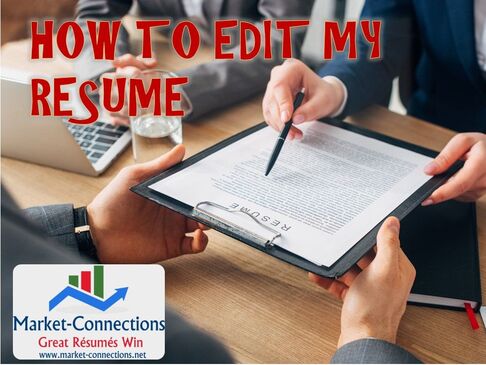

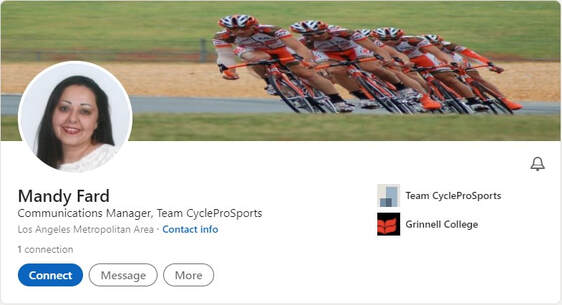
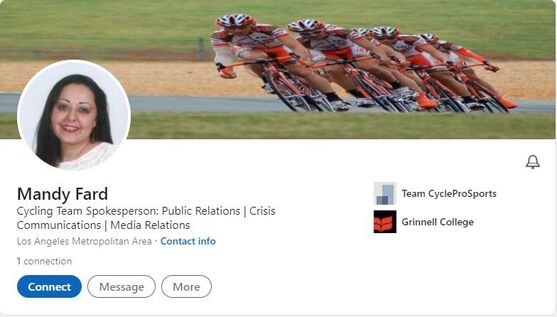
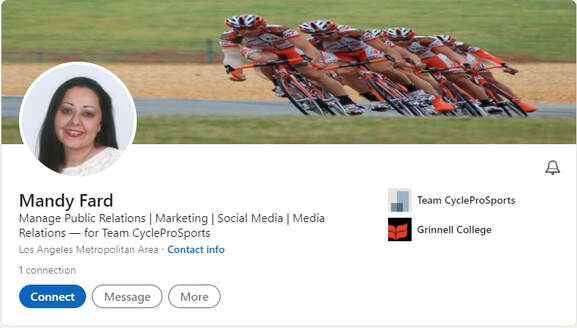
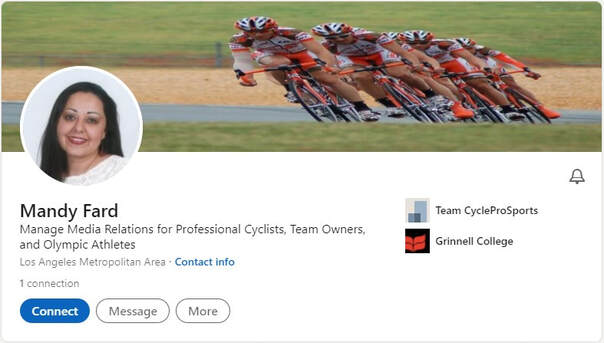
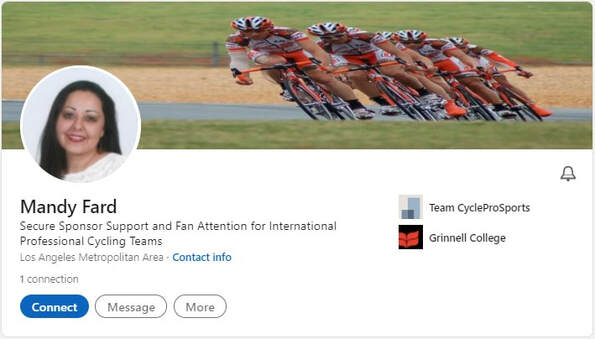
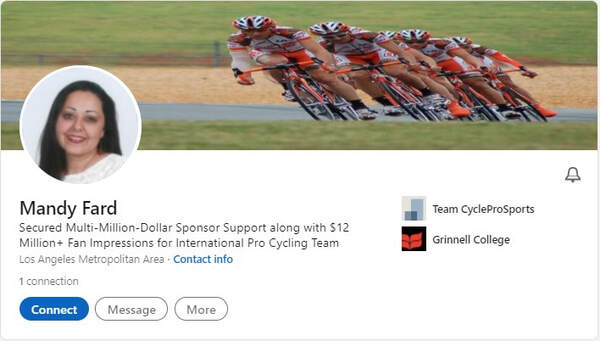
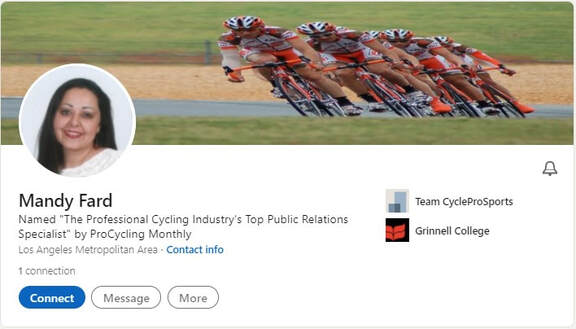
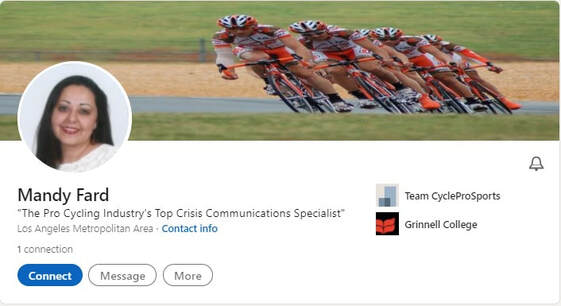




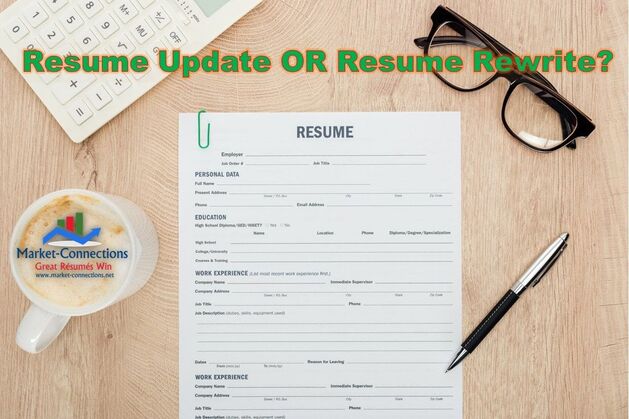

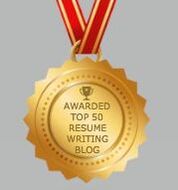

 RSS Feed
RSS Feed



